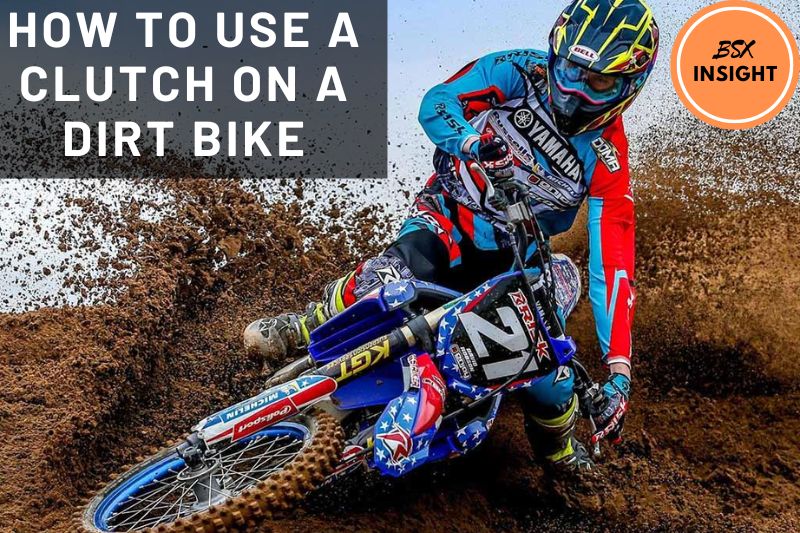Using the clutch is a fundamental skill every dirt bike rider must master. The clutch enables riders to control the power and speed of the bike, allowing for smooth and efficient shifting. However, using the clutch on a dirt bike can be challenging for beginners.
In this article, BSXInsight will provide a comprehensive guide on how to use a clutch on a dirt bike, including when and how to use it, how to shift gears effectively, and tips for clutchless shifting.
What’s a Bike Clutch?
A bike clutch is a mechanical device that connects and disconnects the engine’s power to the rear wheel. In simple terms, it is what allows the rider to change gears on their dirt bike.
Without a clutch, the bike would be stuck in one gear, making it difficult to control and navigate through different terrains.
The clutch consists of several components, including the basket, plates, springs, and clutch cable. Each of these components plays a vital role in the overall function of the clutch.
How Does a Clutch Work?
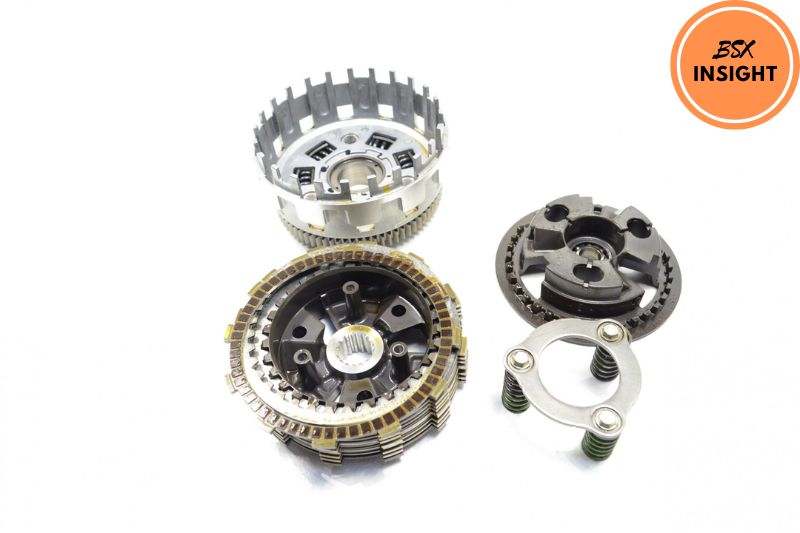
When the engine is running, it produces power that travels through the transmission and eventually reaches the rear wheel, propelling the bike forward.
However, to change gears, the rider must disengage the engine’s power from the rear wheel by pulling the clutch lever.
When the clutch lever is pulled in, the clutch plates separate, disconnecting the engine’s power from the rear wheel. This allows the rider to change gears without damaging the transmission.
Once the rider has shifted gears, they release the clutch lever, and the clutch plates re-engage, reconnecting the engine’s power to the rear wheel.
The clutch cable is what connects the clutch lever to the clutch basket. When the rider pulls the clutch lever, it activates the cable, separating the clutch plates. The clutch springs help keep the plates together when the clutch lever is not engaged.
Overall, the clutch is crucial to any dirt bike’s manual transmission system. It allows the rider to change gears smoothly and safely while navigating through different terrains.
Understanding how the clutch works can help riders better maintain their bike and improve their riding skills.
How To Use A Clutch On A Dirt Bike?
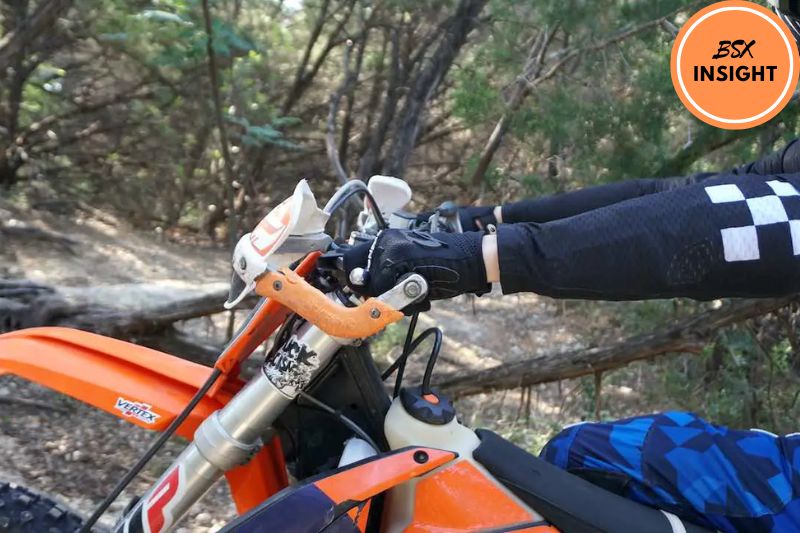
Dirt biking is an exciting and thrilling activity, but mastering the controls, including the clutch, is crucial to becoming a proficient rider.
Learning the Controls
Before getting started, it is important to familiarize yourself with the dirt bike’s controls. The clutch lever is usually located on the left handlebar and is operated with your left hand.
The gear shift lever is located on the left foot peg and is used to shift gears.
The front brake lever is on the right handlebar, while the rear brake pedal is on the right foot peg.
Using the Clutch
Using the clutch is an important part of controlling the bike’s power and speed. To start the bike, pull the clutch lever in with your left hand and push the kickstart lever down with your right foot.
Once the bike starts, release the clutch lever slowly while simultaneously giving the bike some throttle.
To shift gears, pull the clutch lever in with your left hand, then use your left foot to shift the gear shift lever up or down, depending on the desired gear.
Once you’ve shifted gears, release the clutch lever slowly while giving the bike some throttle to engage the new gear smoothly.
Braking
Braking is essential when riding a dirt bike. The front brake lever controls the front brake, while the rear brake pedal controls the rear brake. Using both brakes simultaneously while pulling in the clutch lever to disengage the engine’s power to brake effectively.
Shifting Gears

Shifting gears is crucial to maintaining control and speed while riding a dirt bike.
To shift gears, pull in the clutch lever, shift the gear shift lever up or down, depending on the desired gear, and release the clutch lever slowly while giving the bike some throttle to engage the new gear smoothly.
It is important to remember always to downshift when slowing down or coming to a stop. This will prevent stalling the bike and keep you in control.
Practice, Practise, and Practise more.
Like any skill, using the clutch on a dirt bike requires practice to master. Start by practicing in a safe, open area with no obstacles.
Focus on shifting gears smoothly, using both brakes effectively, and getting comfortable with the bike’s controls.
As you become more confident, challenge yourself by riding on different terrains, such as hills or uneven surfaces. The more you practice, the more natural using the clutch will become, and the better rider you will be.
Tips To Use A Clutch For Beginners
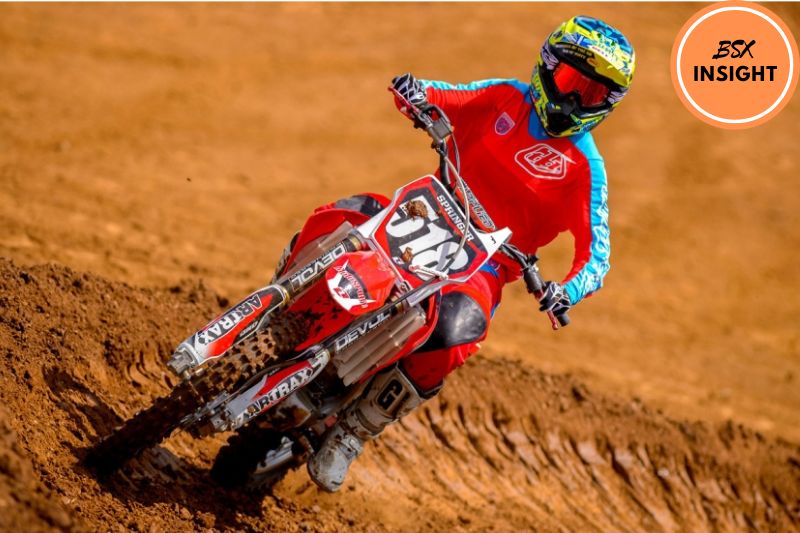
- Familiarize yourself with the clutch pedal: Before you start driving, spend some time getting comfortable with the clutch pedal. Practice pressing it with your foot to get a feel for how much pressure is needed to engage the clutch.
- Find the biting point: The biting point is the point at which the engine and transmission start to engage, and the car begins to move forward. To find the biting point, slowly release the clutch pedal while pressing the gas pedal lightly. Once you feel the car start to move, stop releasing the clutch and hold it in that position.
- Practice clutch control: Once you have found the biting point, practice controlling the clutch pedal to accelerate smoothly and decelerate. When accelerating, gradually release the clutch pedal while pressing the gas pedal. When decelerating, press the clutch pedal down while braking.
- Be patient: Don’t rush when using the clutch. Take your time to get a feel for the car and how it responds to your actions. If you stall the engine, don’t worry. It happens to everyone, and it’s all part of the learning process.
- Use the handbrake: When starting on a hill, it can be challenging to keep the car from rolling backward. To avoid this, use the handbrake to hold the car in place while you find the biting point.
- Don’t ride the clutch: When driving, avoid keeping your foot on the clutch pedal. This can cause the clutch to wear out faster and can damage the transmission.
- Shift gears smoothly: When shifting gears, be sure to press the clutch pedal all the way down, shift the gear, and then gradually release the clutch pedal while pressing the gas pedal.
What Happens If You Shift Without The Clutch On A Dirt Bike?
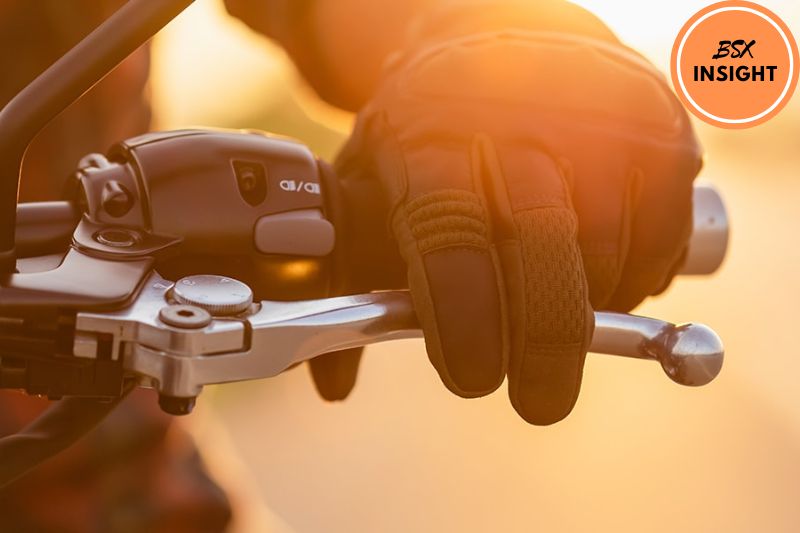
Here is a list of some of the potential consequences of shifting without the clutch on a dirt bike:
- Damage to the transmission: Shifting without the clutch can cause the gears to grind against each other, leading to excessive wear and tear and potentially resulting in transmission failure.
- Lurching or stalling: If the rider accidentally shifts into the wrong gear or shifts at the wrong time, the bike can lurch forward or stall, causing a potentially dangerous situation.
- Loss of control: If the gears grind against each other, it can cause the rear wheel to lock up, making it difficult to control the bike. This can be especially dangerous when riding at high speeds or in rough terrain.
- Increased wear on other components: Shifting without the clutch can also cause increased wear on other components of the bike, such as the chain, sprockets, and tires, due to the sudden changes in speed and torque.
- Reduced efficiency: While clutchless shifting can be faster and more efficient in some cases, it can also cause the engine to work harder and reduce fuel efficiency, resulting in higher fuel consumption and lower performance.
- Risk of injury: Any loss of control or sudden movements on a dirt bike can increase the risk of injury to the rider, especially if they are not wearing appropriate safety gear or are riding in hazardous conditions.
Are There Any Automatic Dirt Bikes?
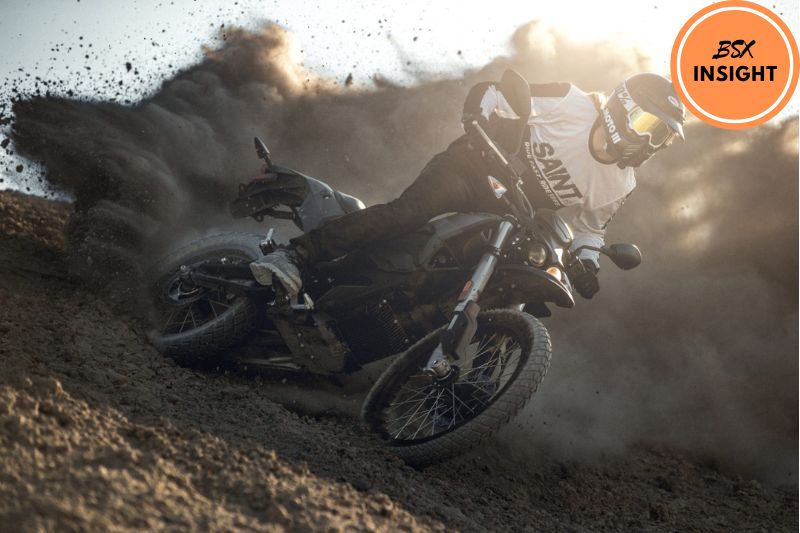
While most dirt bikes come with manual transmissions, some automatic dirt bikes are available on the market. These bikes are designed to be easier to ride, particularly for beginners who may struggle with clutch and gear shifting.
Automatic dirt bikes typically use a centrifugal clutch system that engages and disengages automatically based on the engine’s speed. The clutch disengages when the engine runs at low speeds, allowing the bike to idle without stalling.
When the engine revs up, the clutch engages, transferring power to the rear wheel and propelling the bike forward.
One advantage of automatic dirt bikes is that they are easier to operate, particularly for beginners who may struggle with the coordination required for clutch and gear shifting.
They also tend to be less expensive than their manual counterparts, making them a more accessible option for riders on a budget.
However, there are also some downsides to automatic dirt bikes. They are typically less powerful than manual bikes, and their lack of gears can make them less versatile in different riding situations.
Experienced riders may also find them less engaging to ride, as the lack of gear shifting removes an element of control and skill from experience.
Overall, automatic dirt bikes can be a good option for beginners who are just starting out and want an easier bike to learn on. However, more experienced riders may prefer a manual dirt bike’s greater control and versatility.
FAQs
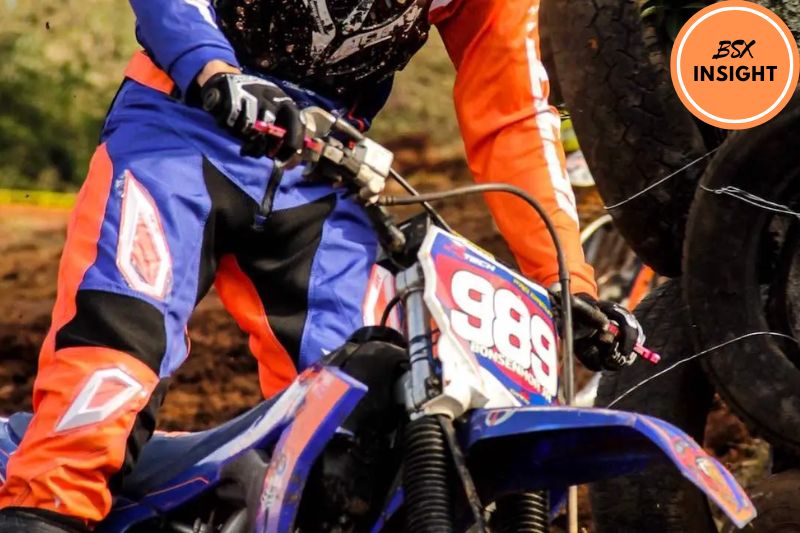
Do I need to use the clutch every time I shift gears on a dirt bike?
Yes, you need to use the clutch every time you shift gears on a dirt bike. The clutch disengages the engine from the transmission, allowing you to shift smoothly without damaging the gears.
How do I know when to shift gears on a dirt bike?
The right time to shift gears on a dirt bike depends on a number of factors, including the speed you’re traveling, the terrain you’re riding on, and the engine RPMs.
As a general rule, you should shift up when the engine starts to sound strained and shift down when you need more power to climb a hill or navigate rough terrain.
What should I do if I stall the bike while using the clutch?
If you stall the bike while using the clutch, you’ll need to start the bike again by kicking the starter or using the electric starter (if your bike has one).
To avoid stalling, try to find the right balance between the clutch and throttle inputs, and make sure you’re shifting gears at the appropriate times.
How can I improve my clutch control on a dirt bike?
The best way to improve your clutch control on a dirt bike is to practice regularly, both on flat ground and on different types of terrain.
Start by practicing basic clutch control, such as engaging and disengaging the clutch while idling, and gradually work your way up to more advanced techniques, such as clutch modulation, while navigating tricky terrain.
Can I use the clutch to slow down on a dirt bike?
Yes, you can use the clutch to slow down on a dirt bike, but it’s not recommended as your primary means of braking.
The clutch can be used to slow down the bike in combination with the brakes, but relying solely on the clutch for braking can cause excessive wear on the clutch plates and reduce its lifespan.
Conclusion
In conclusion, learning how to use a clutch on a dirt bike is an essential skill for any rider. It takes practice and patience to master the clutch, but with time and dedication, you can become confident and skilled at using it.
Always start by learning the controls, understanding how the clutch works, and practicing the proper braking, shifting gears, and clutch control techniques.
Additionally, it’s important to stay safe while riding, wearing proper protective gear, and following all safety guidelines. With these tips and techniques in mind, you’ll be well on your way to becoming a skilled dirt bike rider with confident clutch control.

